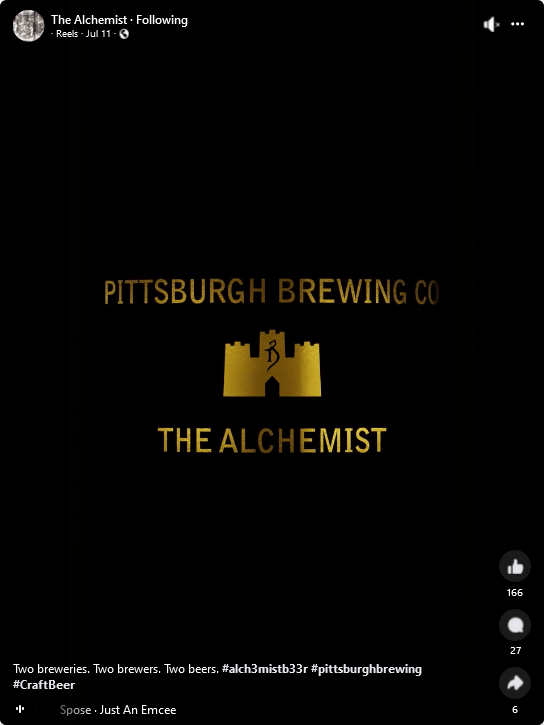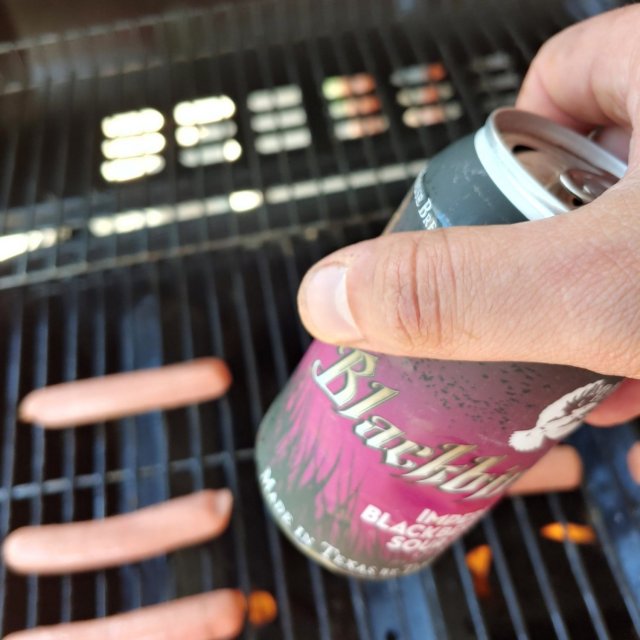Eleven Reasons Why Every Craft Brewer Must Diversify Their Product Line
Lotus Beverage Alliance
(We were reached out by Lotus Beverage Alliance and Don Marcil, for them to be able to write this article for the blog – The Beer Thrillers. Everything written here is by them, and pictures involved are their own. They have written this article on their own, the opinions and words expressed here are theirs; The Beer Thrillers just edited and formatted the article.)
Eleven Reasons Why Every Craft Brewer Must Diversify Their Product Line
Craft beer sales and the number of independently-owned breweries entering the market have continued to grow steady over the past decade. According to The Brewers Association, the number of active craft breweries in the U.S. increased from 9,119 in June 2022 to 9,336 in June
2023, with the total number of independent craft breweries rising from 9,242 to 9,456.
A generation of steadfast beer drinkers fueled growth for years, but many are now moving on to spirits, wine, non-alcoholic or other beverages, their preferences evolving to match their budget, lifestyle and health. Taking their place, the next generation of consumers doesn’t have loyalty to one brand or style and demands a more diversified breed of brews. These days, they are finding new and crossover categories of beverage to satisfy their tastes. As a result, the landscape of the craft beer industry has become complicated and more difficult to navigate. We can see this in the acquisition and divesting activity of the larger beverage manufacturers, who are trying to stay ahead of trends and realizing that, although beer is still king, the big picture is one of diversified beverage companies.
Breweries must adapt and provide variety to customers and seize opportunities to thrive in this
highly competitive and evolving industry. The increase in competition is a common issue for both new and existing businesses as any industry evolves and matures. With craft brewing, staying at the head of the pack is key.. So, how can craft brewers differentiate themselves and compete? One way is to diversify your line of craft beverages or as I like to describe it, embracing cross beverage opportunities. This can be tricky from a licensing perspective, depending on your state, but when properly done many small craft brewers have thrived in realms other than just beer. Diversification in the beverage industry isn’t a new concept but is becoming more and more noticeable, with the lines between beverage sections blurring the addition of Cold Brew, Kombucha, Wine, Seltzer and/or Spirits can augment your business positively.. A recent large-scale example is Boston Beer Co., makers of Samuel Adams. The beer manufacturer has been diversifying into hard seltzer and spirits, as demonstrated by its 2019 merger with Dogfish Head (the Delaware brewery has a distillery) and a partnership with Beam Suntory to develop new Ready-to-Drink (RTD) cocktails and spirits, a segment projected to grow substantially.
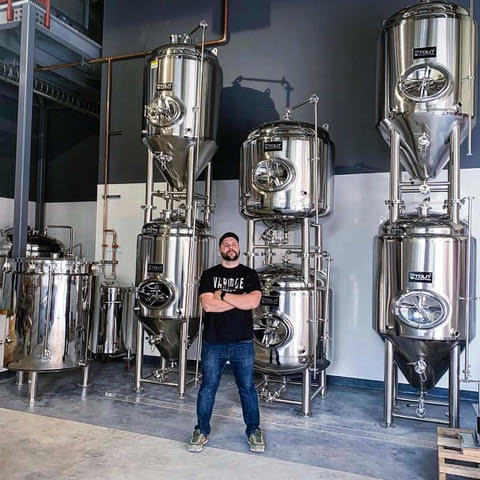
Why should craft brewers consider diversifying their products? Here are eleven key reasons:
1. Market Demand
Consumer preferences are fickle, especially with younger beer drinkers. The Boomer and Gen X beer drinkers were easy targets. They tend to stick to one brand or style of beer and generally were not looking to explore outside of their favorites. However, Millennials and Gen Z drinkers are loyal to no one. Their tastes and preferences can change rapidly leaving room for brewers to capture new audiences. Diversifying products allows you to adapt to evolving tastes and trends. By offering a variety of beer styles, flavors, and experiences, you can attract a broader range of customers and stay relevant in the competitive craft beer market. With proper licensing, using other beverage segments to create hybrid beverages can be beneficial and exciting to your customers. Millennials and Gen Z talk to – what appeals to friends will get shared with others.
2. Risk Mitigation
Relying solely on one or a few flagship products can be risky. If a brewer’s primary product loses popularity or faces production issues, it can significantly impact the business. Diversification helps spread this risk and increase the chances of finding an untapped segment of your customer base.
3. Seasonality
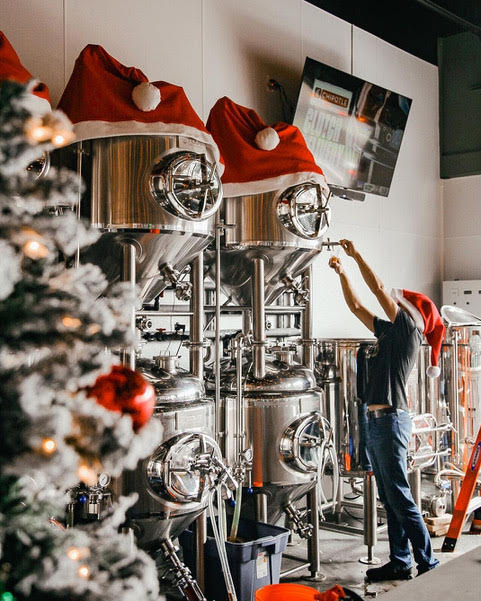
Different beer styles are more popular during different seasons. For example, lighter, refreshing beers might sell better in the summer, while darker, heavier options are favored in the winter. Embracing seasonal styles and release schedules allows for another product category that can easily be added without too much R&D. Diversifying allows brewers to cater to seasonal preferences and even give a new brew a try. Consumers are expecting limited
runs during various seasons, but if a new batch is really popular, a brewer might consider adding it to the permanent offerings.
4. Customer Loyalty
By offering a variety of products, craft brewers can build stronger relationships with customers. A diverse product range encourages repeat business, as customers are more likely to return to try new offerings. And as I noted above, consumers talk. So if you have a loyal customer, they are sure to tell their friends and family who might also turn into loyal customers.
5. Competitive Advantage
Diversifying can set a brewer apart from competitors who limit their selections. Unique and innovative brews can attract attention and draw customers seeking novel experiences. Beer releases are a great platform to make a new impression on existing customers as well as new customers.
6. Tap Into New Markets
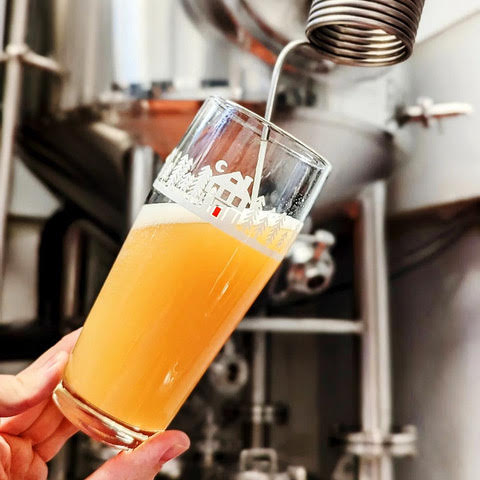
Different beer styles may appeal to different demographics. By diversifying, brewers can tap into new markets and attract a broader customer base, including those who may not typically drink beer. Some brewers will set up booths at different festivals and events to test their offerings among different groups of customers. This is a fun way to get
involved in different communities and gain the attention of varying markets.
7. Collaborations and Partnerships
Diversification can lead to collaborations with other breweries or businesses, which can be beneficial for cross-promotion and expanding reach. Perhaps one of the businesses brings a skill set and the whole experience can contribute to learning new styles and techniques. For example, a particular festival or event might sell your latest brew and customers from out of town try it. They take it back to their friends and family and spread the word in a new community. You have now solidified a new collaboration and expanded your customer base.
8. Brand Building
A diverse product line can help build a brand’s reputation for quality and creativity. You can really elevate your brand from being known for one style into a trend-leader by adding various tastes and brews to your lineup. Consumers often associate innovation and experimentation with craft breweries and diversifying is the perfect way to experiment and impress current followers while adding new ones.
9. Sustainability
Using different ingredients and production methods can be more sustainable in the long run. An example would be utilizing new grains that utilize less water to grow or partnering to make dog treats out of spent grains. Another example is if a brewer diversifies by making fruited sour beers, they can partner with farms to use excess or imperfect fruits that might otherwise go to waste. Brewers can always strive to reduce the amount of water they use; brewers used to consistently have a 10:1 water ratio but it’s not unheard of to have a 4:1 ratio in some breweries. There are a large number of opportunities to be explored.
10. Experimentation and Growth
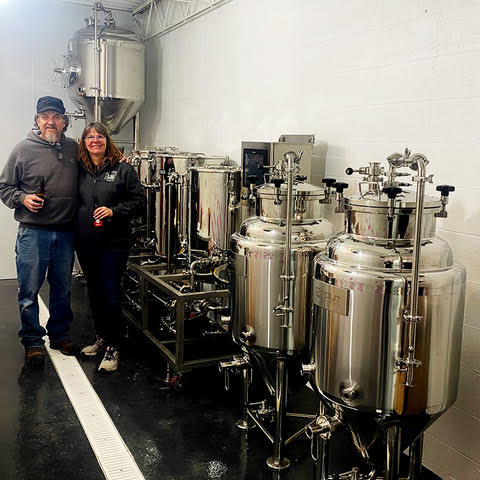
Brewers need freedom to try new things. Diversification can be a source of creative and professional growth for brewers. Experimenting with new styles and techniques can keep the brewing team engaged and excited about their work. You never know what you might come up with – sometimes the best new brews are produced when you least expect it.
11. Revenue Growth
Ultimately, offering a wider range of products can lead to increased sales and revenue, which is essential for the sustainability and growth of any business. With a saturated market, the need to stand out and appeal to a wide variety of customers is key to keeping steady revenue. When executed well, new products and new markets translate into new revenue streams.
Adding a New Beverage Line
The good news is that adding a new beverage line to your production facility doesn’t have to break the bank. For most brewers, it’s a matter of repurposing the equipment you probably already have. Keep in mind that any additional equipment you’ll need will depend on the specific types of beverages you want to produce (e.g., ready-to-drink cocktails, seltzers, or wine) and the scale of your existing operation. Here are a few considerations on equipment you might need to expand your craft beer offerings:
- Fermentation Vessels: To brew different styles of beer simultaneously, you’ll need more
fermentation vessels. The size and number of these vessels depend on your production
volume. Consider fermenters of various sizes to accommodate different batch sizes. - Different Types of Grain and Hops: To brew a variety of beer styles, you may need
specialty or unique types of grains (e.g., barley, wheat, rye from a particular region, or
malting method) and hops (e.g southern hemisphere, seasonal wet hops, or hard to
source experimental offerings), having connections to source them is key - Specialty Ingredients: If you plan to brew specialty or experimental beers, you may need
additional ingredients like fruit purees, spices, herbs, or oak barrels for aging. - Yeast Strains: Different beer styles often require specific yeast strains to achieve the
desired flavor profiles. You may need a selection of yeast strains, including ale, lager,
and specialty strains. - Temperature Control: Depending on your brewing style, you might need additional
temperature control equipment, such as fermentation chamber space or glycol cooling
systems. - Packaging Equipment: If you’re expanding your offerings, you may need additional
bottling, canning, or kegging equipment to package your diverse beer styles efficiently. - Quality Control Tools: To ensure consistency and quality across your beer styles,
consider investing in laboratory equipment or utilize a lab for testing. - Regulatory Compliance: Expanding your beer line might entail compliance with
additional regulations and permits, so be prepared for potential legal and paperwork
requirements.
Conducting a thorough business and financial analysis before expanding your craft beer line is essential. Calculate the costs of acquiring new equipment, ingredients, and personnel and compare them to your expected revenue from the diversified beer line. This will help you determine the feasibility and profitability of the program.
Keep in mind that the specific equipment and resources you need will vary based on your business’s unique goals and circumstances, so it’s advisable to consult with industry experts or experienced brewers for personalized guidance.
Diversify, But Retain Quality
It’s essential for craft brewers to balance diversification with maintaining quality and consistency.
While diversification can be beneficial, it should not come at the expense of the core quality and identity that customers associate with the brand. Brewers should also consider investing in market research and customer feedback when deciding which products to diversify into to ensure they align with their target audience’s preferences and expectations.
About the Author: Don Marcil
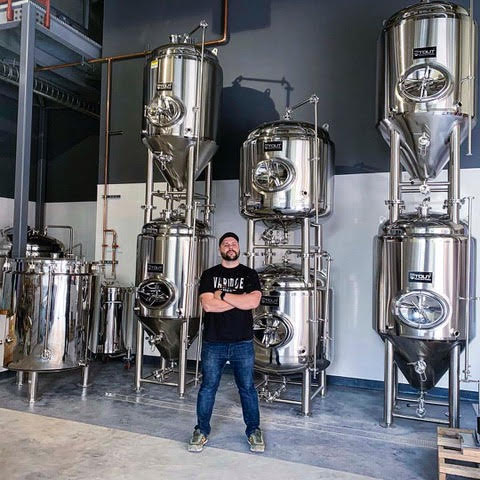
Don Marcil is a brewery systems consultant at Stout Tanks, a Lotus Beverage Alliance company. Don left his life as a graphic artist to pursue his dream of brewing beer. He enrolled in the American Brewers Guild in 2009, during which he did a five-week apprenticeship in Portland, Oregon, at Hopworks Urban Brewery, where he worked through 2018 as an active Production Brewer, Safety Manager, and Head of Cellar Operations. At Stout Tanks, Don helps brewers of all sizes acquire the equipment and engineering to take their beverage production to the next level.
(We were reached out by Lotus Beverage Alliance and Don Marcil, for them to be able to write this article for the blog – The Beer Thrillers. Everything written here is by them, and pictures involved are their own. They have written this article on their own, the opinions and words expressed here are theirs; The Beer Thrillers just edited and formatted the article.)
(We were reached out to via a third party for this article to be featured on our site, this is a paid content and paid guest post. If you would like more information on getting your own article published on the site, visit our WRITE FOR US page.)
Thank You For Reading
If you like this article, please check out our other many articles, including news, beer reviews, travelogues, maps, and much much more. We greatly appreciate everyone visiting the site!
Cheers.
Thanks again for reading everyone. Take some time to check out the site, we greatly appreciate it. We have affiliates and sponsors with Pretzels.com and Beer Drop.com, which can save you money on their products if you are interested. Check out our articles on them. Make sure to check out our beer reviews, brewery reviews, Amy’s weekly column, book reviews, hike reviews, and so much more.
As always, thank you everyone for reading! Leave your likes, comments, suggestions, questions, etc, in the comments section. Or use the Feedback – Contact Us – page, and we’ll get right back to you! You can also reach out to us at our direct e-mail address: thebeerthrillers@gmail.com
Thank you for visiting our blog. Please make sure to follow, bookmark, subscribe, and make sure to comment and leave feedback and like the blog posts you read. It will help us to better tailor the blog to you, the readers, likes and make this a better blog for everyone.
We are working on a massive project here at The Beer Thrillers. We are creating a map of all of the breweries across the United States. State by state we are adding maps of all of the different states with every brewery in each state. (We will eventually get to the US Territories, as well as the Canadian Provinces, and possibly more countries; as well as doing some fun maps like a map of all the breweries we’ve been to, and other fun maps.) You can find the brewery maps here:
We are also working on a project of creating printable and downloadable PDFs and resources to be able to check and keep track of all of the breweries you’ve been to. So stay tuned for that project once we are finished with the Brewery Maps of the US States.
You can check out our different directories here: Beer Reviews, Hike Reviews, Book Reviews, Brewery News, Brewery Openings, Brewer Interviews, and Travelogues.
Please be sure to follow us on our social media accounts – Facebook, Facebook Group, Twitter, Instagram, YouTube, and Influence. As well as our brand new Tumblr page. Please be sure to also follow, like, subscribe to the blog here itself to keep updated. We love to hear from you guys, so be sure to leave a comment and let us know what you think!
You can now find us on our Discord Server here: The Beer Thrillers (Discord Server). We’ve also joined LinkTree to keep track of all of our social media pages, as well as hot new articles we’ve written.
The Beer Thrillers on LinkTree can be found here: The Beer Thrillers LinkTree.
We have partnered with an affiliateship with Beer Drop.com. You can check out that partnership and receive great discounts, coupons, and more here: Beer Drop. Going here and logging in and ordering will help you receive your discounts and coupons as well as help support our page. Thank you for helping to support The Beer Thrillers and to help us maintain the site and blog and to keep it running.
The Beer Thrillers are a blog that prides itself on writing beer reviews, brewery reviews, travelogues, news (especially local to the Central PA brewery scene), as well as covering other topics of our interests – such as hiking, literature and books, board games, and video games which we sometimes stream with our friends over at Knights of Nostalgia. We are currently listed as #7 on FeedSpot’s “Top 100 Beer Blogs” and #8 on FeedSpot’s “Top 40 Pennsylvania Blogs”. (As of January 2023.) Thank you for reading our site today, please subscribe, follow, and bookmark. Please reach out to us if you are interested in working together. If you would like to donate to the blog you can here: Donate to The Beer Thrillers. Thank you!
You can also check out our partnership and affiliation with Pretzels.com, where ordering pretzels and using our affiliate code – AFFILIATE CODE IS THEBEERTHRILLERS20 – will help you get wonderful pretzels and help us maintain and keep this blog running. Thank you!
If you would like to reach out to us for product reviews, beer reviews, press release writing, and other media – please contact us at thebeerthrillers@gmail.com. Thank you.
If you would like to help keep the blog running soundly and smoothly, you may donate to us to help us keep the costs of the blog to a minimum. We greatly appreciate it. Thank you. (Clicking this link will take you to the page to make a donation. Thank you very much for helping us stay afloat!)
(Thank you for reading. The opinions, thoughts, and expressions of each article posted on The Beer Thrillers represents the author of the content and only themselves. It does not express the opinions, beliefs, or ideas held by The Beer Thrillers or any company in which the author themselves work for. Each piece of written content is written by the creator(s) listed in the authorial section on each article unless otherwise noted. Their opinions, comments, and words on screen do not represent any company in which they work for and / or are affiliated with or any non – profits that they contribute to. Thank you.)


